Knife 50 5 ½” Hunter – What About Knife Handles & Scales
- Steel – 1/8” 1095
- Blade 5 1/2”
- Overall – 10 7/8”
- Scales – Desert Ironwood
- Handle finish – wax
- Drop Point design
Desert Ironwood is a hard dense wood with a great grain figure. It doesn’t take well to stabilizing because of it. It is dense enough that it makes a great knife handle as it is.
Knife Handles & Scales
Knife Handles & Scales come in a variety of materials. Natural Wood, Stabilized Wood, Carbon Fiber, Unique Resins, Composites, Micarta, G-10, Bone, metals, horn, antlers, and and some I’m sure I’ve missed or do not even know about. Most you can find by searching this site for the knife handle type.
To me a classic looking knife, a truly exquisite knife, one you just want to carry on your next adventure, will always have a wood handle. Wood is the traditional substance for a beautiful knife handle, and unless you plan to be in the most extreme survival conditions, for lengths of time almost humanly unbearable, a wood handle will always perform wonderfully. And nothing really can compare to wood for adding beauty to your knife, but a basic note about wood scales or handles. If you are using wood for your Knife Handles & Scales that are not stabilized, you should make sure the wood is dry. (See stabilizing wood ) Store your blanks in a dry place to get them dry and keep them dry. The typical recommendation is your wood be between 6-8% moisture content. For Knife Handles & Scales, lower is better. This will work well, especially if you are just making knives for yourself. The real issue is as a knife crosses to other climates, it will lose or take on moisture depending on the climate. The good thing is knife handles and scales are typically small, so the movement is minimal. If reasonable precautions are taken to ensure the wood is dry, they should work without issue. Using stabilized wood for Knife Handles & Scales made from wood that is more susceptible to movement is recommended.
Doing a google search can sometime get you answers on the stability of the wood you want to use. If in doubt, I suggest using stabilized wood. There are good dense wood that if dry, will not need stabilization like rosewood, ironwood and similar.
Many knife makers prefer something less susceptible to moisture, especially for kitchen knives. For this Micarta, G10 and other synthetic materials work well. The advantages of Micarta are, it’s pretty well impervious to weather and moisture, most oils and solvents, and is EXTREMELY durable and tough. Since it’s made up of thin layers, the more angles and cuts you make in the material, the more the “grain” shows.
The primary difference between G10 and micarta is in the materials used in construction. G10 is made from layers of continuously woven fiberglass, impregnated with epoxy. Micarta is also laminated, but uses materials such as linen, burlap or canvas. Most people consider G10 to be easier to grip than micarta when the knife handle is dry, while micarta is usually considered to offer a better grip while wet.
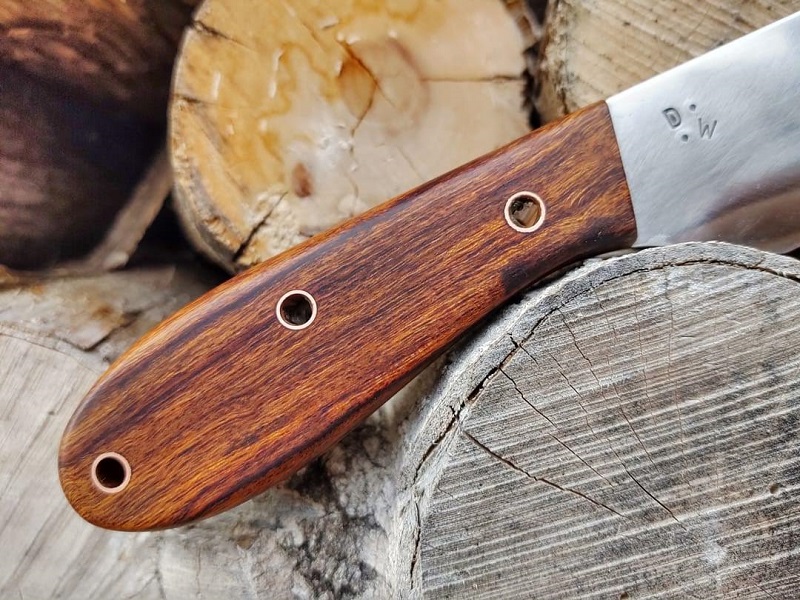

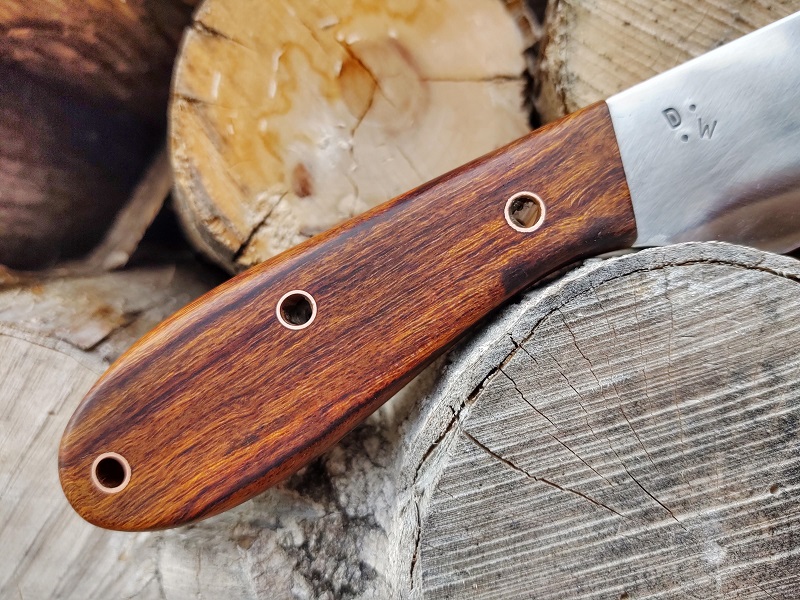
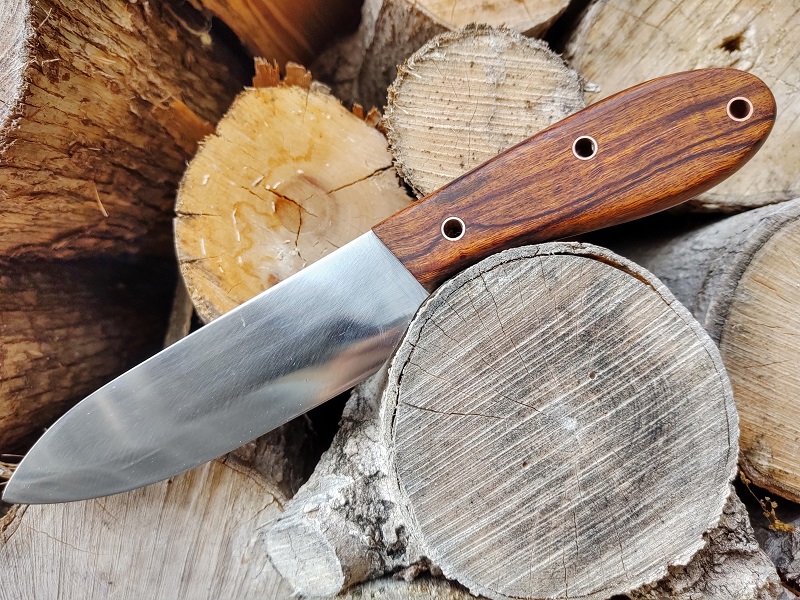
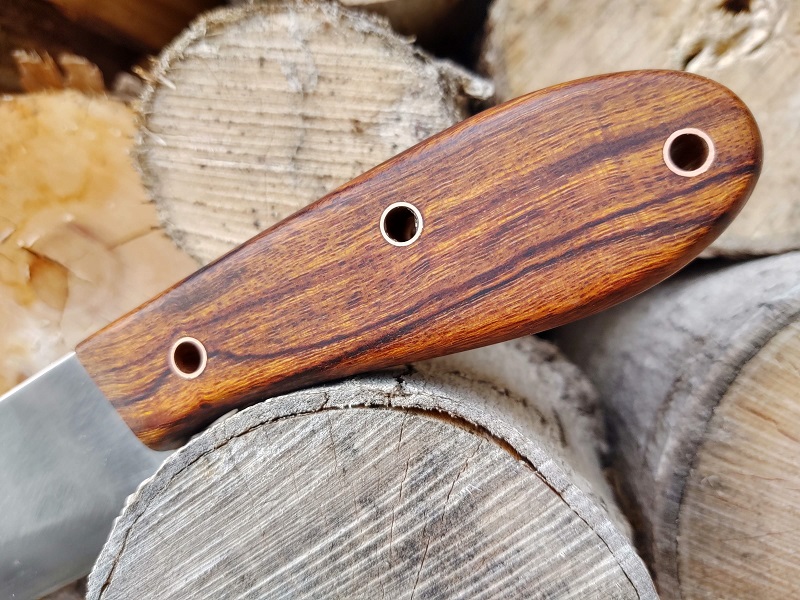

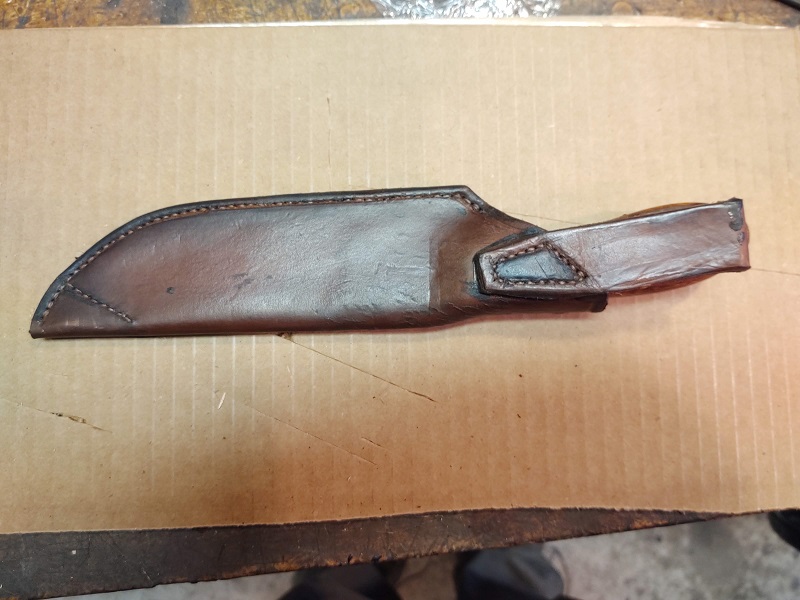
________________
As an Amazon associate, we earn income from qualifying purchases when you click on a link. Your link clicks help us fund our website.________________
